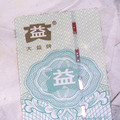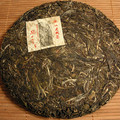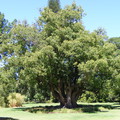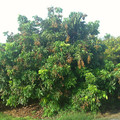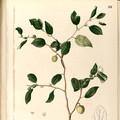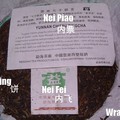To the village of ethnic minorities in Yunnan to visit the old tea tree
Yunnan Pu-erh Tea - List by Tomáš Machálek
„“

- Discussion: 0 comments
- Write a comment
Teas - Pu-erh
YouLe 2013 - blind tasting set 6
 1 review
1 reviewdense, rich, bitter-sweet, fruity aroma, full body floods the whole mouth and gives a...
2016 Chawangpu Yibang Manguishan Xiao
 0 reviews
0 reviewsLast winter was unusually cold. Many people thought they would have a good harvest the...
Shu 7581 - 2002
 1 review
1 review„tailor-made” private production “Zhong Cha Gong Si” This tea was stored for...
2002 Fu Cha Ju Ailaoshan Ripe Puerh Cake
 2 reviews
2 reviewsThis high quality ripe cake is made of spring large-leaf varietal arbor tea from Ailao...
2014 Jingmai Gu Shu Huang Pian
 1 review
1 reviewThis tea is from Jingmai Da Zhai, grown in Da Ping Zhang area, and it is considered to...
2007 Banzhang Tuocha Certified Organic
 1 review
1 reviewThis tuo is composed from spring material from Menghai area (most from Bulang mountain)...
Quotes - Pu-erh
„Mr. Gao showed us how to identify gu shu (ancient tree) tea leaves by looking at their texture, rubbing them between your fingers, and eating them raw. Old tea trees produce thicker, more leathery leaves that don’t easily come apart when you rub them. And gu shu buds should be white & shiny. When you chew them, the flavor is very bitter but there is also a strong sweet fragrance, and the juice is relatively easy to swallow. Tai di cha (terrace plantation tea) is also bitter but with a strong, lasting astringency on the sides & front of the tongue, and the juice is harder to swallow.“

Quotes Tags: Pu-erh, Gushu, Tea production, Experiencing tea
Video - Pu-erh
Teas
2008 Xiaguan FT Xizi (Happy) Tuo Cha Raw 100g
 1 review
1 reviewXizi tuo is one of famous Xiaguan Fei Tai products. Used high quality blend of 1-3 years aged materials and...
2006 Langhe TF Meng Hai Chitse Beeng Cha
 1 review
1 reviewThis is one of classic recipe from Langhe tea factory which is similar with 8542 from Dayi. This tea is...
2009 Xinhua Qu Jiang Bao Pian 60g (10 slices)
 1 review
1 reviewQu Jiang that rises in Gutai moutain Xinhua County Hunan Province and flows eastward through Fengjia,...
Theme
Tea by region
We will help you with tea selection.
Do you like quality loose tea?
We will help you to find the right one for you. Be inspired by tea ratings of other tea lovers. Rating stars could help you.


Review your cup of tea.
Review the tea you are drinking and help other tea lovers to find the right cup of tea.



Quotes
„Flavonoids are a group of phytochemicals present in most plant products that are responsible for health effects such as anti-oxidative and anticarcinogenic functions. However, based on the same USDA survey, the content of flavonoids may vary dramatically amongst different tea products.“



 Shops
Shops Share on Facebook
Share on Facebook






